the machine
Gear & setup : singular and evolutive choices
Nota bene :
1/ this article is issued after a change of footbike which has risen legitimate interrogations, as well as misunderstandings.
2/ switching brand is not due to any problem with Kickbike, but to the fact that this manufacturer does not build 20×20 models, a type of scooter I’ve decided to kick on nowadays
3/ decision and choice were made, awareness of the reasons leading me to change setup were there before I was in touch with other manufacturers. It is I who reached out to designers of scooters in order to change my actual model; I did not change my actual model because some producers had contacted me and offered to change it.
4/ Kickbike and Yedoo are or have been kindly supporting me for free, without contractual conter-parts, unless honest feedbacks from the trails and authorization to share my aventures on their machines through my pictures and texts. Thank you guys <3
In January 2018, I decided to switch from a footbike with 26″/20″ wheels to one with 20″/20″ wheels. What is the context of that decision, and why this change?
TO EACH PERSON HER OWN JOURNEY AND TECHNICAL CHOICES
First of all, I think it’s important to say that there is no such thing as a perfect universal setup. There are as many relevant setups and options as there are users and environments. Considering the way one likes to travel (ultra minimalist to ultra comfortable, some people like to carry nothing, some don’t mind carrying extra weight, and through different ways of packing), the type of roads one will hit, and the conditions one will face, plus the fact that all of those things evolve along the way for one single person, it’s common sense to state that a setup is eventually a matter of utterly individual choice. Experience only will ultimately tell if one wants to tune his setup differently or not. Even more when one has travelled a pretty long way. I’ve roughly exposed this singularist approach concerning gear and setup on the gear page.
VERY LONG TERM ITINERANCY, COUNTER-INTUITIVE MINIMALISM
On such a very long-distance and long lasting journey as I’m committed into, it’s not anymore about getting from point A to point B as quickly as possible, it’s about living on the road, and in my case, being in the quest for the means of a good life. And so, there are constant, but not necessarily fast, evolutions and desires to adapt to changing environments as well as a reactivity to the growing stock of lessons the journey provides, enriched by the mood of the moment.
I have now been kicking for two consecutive years on 27×18 scooter (Kickbike Sport G4 – Europe Tour), then a 26×20 scooter (Kickbike Cruise Max – World Tour), for nearly 35 000km, from the perfect asphalt of Helvetia and Austria, to the more bumpy roads of Czech Republic, to some dirt trails of Scandinavia to the deliquescent ways of Central Asia and rocky then snowy trails of the Pamir… My packing set-up also has changed midway through, which coincided with the change of models and the end of the Europe Tour, after I exposed my ideas to Hannu from Kickbike. I went towards a “bikepacking setup” and a deeper exploration of lightweight/minimalist philosophy, in the context of travelling self-supported, equipped for 4 seasons, carrying shelter and food for many days, liters of water, having a relative energetic autonomy – solar panels, battery – and carrying means of communication – laptop, camera.
For me, there always has been a concern for what it means to “be in autonomy without support in the modern world”, how much I can push and keep kicking as if I’d kick indefinitely, what my real needs are, what I can get rid off, what kind of tool can answer better to my quest of the good life, what is the nature of human relationships with tools, etc.
The trick is that, sometimes, minimalism is counter-intuitive and multi-faceted. This is at least what I’m concluding these days. For example, I’ve come to consider that replacing a synthetic ultra-light weight air mattress that keeps getting punctures by a self-made wool felt mattress, or a long mantle made of sheep skin, though those will weight more, can be an act of going towards more minimalism. One reason is the carbon (from pre-production to everlasting waste) and destructive footprint, this is easy to see: consider the means of production of an industrial synthetic mattress and how one got it in the first place, it weights a lot in term of energetic impacts, exploitation of human beings, and destruction of the living realm. But there is not only this, not everyone is concerned with how one’s is involved in the mass production system, though, whilst some companies make efforts to produce more ethically, very rare is industrial production that does not in a way or another delocalize a part of the process, or requisite raw material from the earth in a destructive way.
MODERNITIES AND TRADITIONS, TO CRAFT OR TO PRODUCE
One can consider also traditional animal/human powered technics versus industrial mechanized technics. Isn’t it interesting to consider the evolution in how people, communities, have found specific survival skills and crafted different tools through eons, in the same geographical areas that more or less present the same terrestrial conditions, and why the main modern tale is that outdoor people today should get the high-tech costly ultra-light gear? How did we end up here, and what about scraping up a bit the surface of that story, what about exploring how one can find inspiration in local historical traditions? And even, why not begin to forge one’s own technical responses to one’s own environment, at a time given. There is a minimalism in that I believe, in the sense that by doing so, one gets rid of the weight of the production system and the modern tale of progress, and one can find a sort of fair weight of the equipment one uses, which eventually feels like a lighter weight at every level of one’s life. In this optic, minimalism is not a race to get rid of weight thanks to high technology, it is mostly about reconsidering what one really needs in order to live.
In the reality of a life experiment, it is a matter of a grey continuum, rather than a black and white “do and don’t” set of rules: even if you long for measured technics in balance with a whole ecosystem, it’s getting pretty hard to avoid any entanglement with the global integrated civilization and its productions. Personally, I’m indeed more and more drawn to exploring what is possible with traditional and local ressources (which generally just means pre-industrial, at the reach of the hands and local know-how), but it’s a long process, and I still use a mix of things, industrial and not industrial, up until the very machine I’m kicking on… It’s part of the quest of the good life, it’s a process and an examination that has to be iterated every single day, wherein a small tuning can seem a tiny thing, whilst it can bear a huge meaning and impact on a life.
A NEW MACHINE AND SETUP IN CENTRAL ASIA
How can one of my riding days be like : I can break camp off road and have to reach a track on rugged soil, then kick on top-notch macadam for 20km and suddenly end up on a gravel road, have to climp or descent rocky slopes, or damaged roads, pass through snowy, icy ways, have to walk, push or lift off road to bivouac, under rain, snow, sun, under extreme colds and heat, against of helped by the winds. I can have entire days with good asphalt, entire days without it. You can span this over a year, it’s the same. Given the variety, there can not be one sole machine optimized for each different situation, it becomes about prioritizing and finding the best compromise for my own practice.
Lastly, I’ve been confronted to harsh terrains and conditions (extreme cold, rocky, snowy and icy roads, heavy terrains, stiff uphills, old roads in terrible state – which is perhaps the worst !), which made me feel how quickly the scooter (my premium tool) and the gear could turn into a bulky and unadapted dead weight. After pretty tough moments in the Pamirs, I felt I had to change something again.
To sum up my orientation, there are 3 important axes that mattered, around which I wished to make change:
1/ Minimalism/weight
2/ Ergonomics/dynamics
3/ Response of the machine to different kind of environments
1/ Minimalism/weight
- The difference of weight between the Cruise Max (9,9kg) and the new Dragstr (7,4kg) is nearly 3kg.
- The small diminution of space on the front fork and generally smaller machine are an incitative to push always further minimalism, and force myself not to accumulate, or reming me that I don’t want to.
- New specifications ask for creativity and thinking through what one needs, again.
2/ Ergonomics/dynamics
- Two same-sized wheels will give a more balanced repartition of energy in the spining
- The smaller size of the machine is nearer to my physical constitution (1m60), it’s a step towards a more relevant symbiosis between the woman and the machine (though one probably can end up adapting to nearly anything with time)
- Not so much speed lost between 26=>20, specially loaded and on a touring spirit. If there is, it became secondary compared to other priorities, like maneuverability and cumbersomeness.
- If I come up with a satisfying packing setup on the scooter, the point of gravity will be a bit lower
3/ Response of the machine to different kind of environments
- I wanted to switch to a more cross-terrain ability, without having to go for a suspended fork: I changed my type of tires to a better profile for gravel and dirt roads. WIth Yedoo, we came up with choosing the Crazy Bob, which can be pumped up to 7bars. It will allow a large range of adaptation to different terrain, by playing with the pressure.
- there is a loss of stability by switching from 26 to 20 in front, but the load and the change of tires make a stabilizing counterpart to that.
- the machine, lighter and a bit less cumbersome, is easier to manipulate and to drive (and if needed to lift, carry, push, etc) in challenging environments
So, that’s how and why grew up the idea of an unexpected, counter-intuitive move for some people: switching to a 20×20 model. I had to give it a fair try ! Just like someone commented on my publication when I revealed the new scooter, I nowadays feel it will be the best compromise for me between speed and cumbersomess on a loaded touring mode, regarding my actual needs and experience. And guess who liked that comment ? Hannu Vierriko (boss of Kickbike and legendary figure of the footbike universe, whom I met in Finland when travelling throughout Europe).
IT ALL DEPENDS ON PERSONNAL EXPERIENCE AND LESSONS GIVEN BY THE ROAD OF ONE’S OWN ADVENTURE, THAT’S THE RULE, THOUGH IT MAY NOT PLEASE PATERNALIST AND CONDESCENDANT MINDS.
Lastly, gear, machine, tools, journey, perspective and thoughts are evolutive. Terrain and experience don’t lie, but they are not always the same. And perhaps at some point, I’ll be drawn to yet another setup, which will have nothing to do with the quality of the machine, nor with a previous hypothethic lack of judgment or expertise, but everything with the contextual experience of the moment. The Kickbike G4 and Cruise Max were beasts that have endured 35000km without a flinch (Kickbike simply does not produce a 20×20 machine).
I would say that there are no rules, apart from the scalable desires and lessons accumulated, before anything else, from an individual thus singular experience of the terrain and the adventure. No one should give a damn about patronizing minds (in my case often paternalist and sexist) in need to tell other people what to do or not do, what’s better or not, what will fail or succeed, what they will go through and what they are living. On the contrary, those people should listen more to what other people say about their own choices and how they experiment it in their own ways, what they learnt from it, in order to become aware that there are many ways of gearing up and getting something out of it. They should work on their empathy: what seems ideal for them isn’t necessarily so for others, as hard as it can be to acknowledge. Only from that moment on can an authentic dialog on gear and technics begin, in an enriching attitude that is humanly respectuous.
Evolution of the scooters and packing during 2 years and 35 000km.
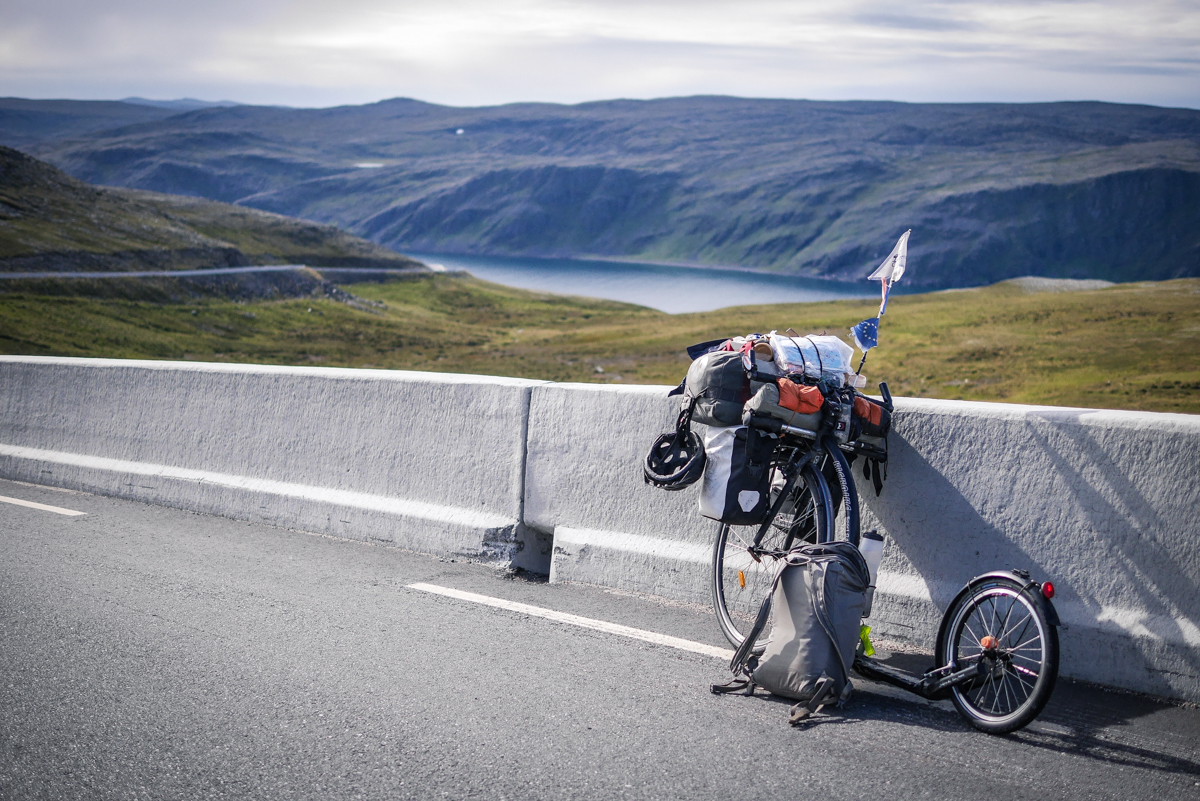
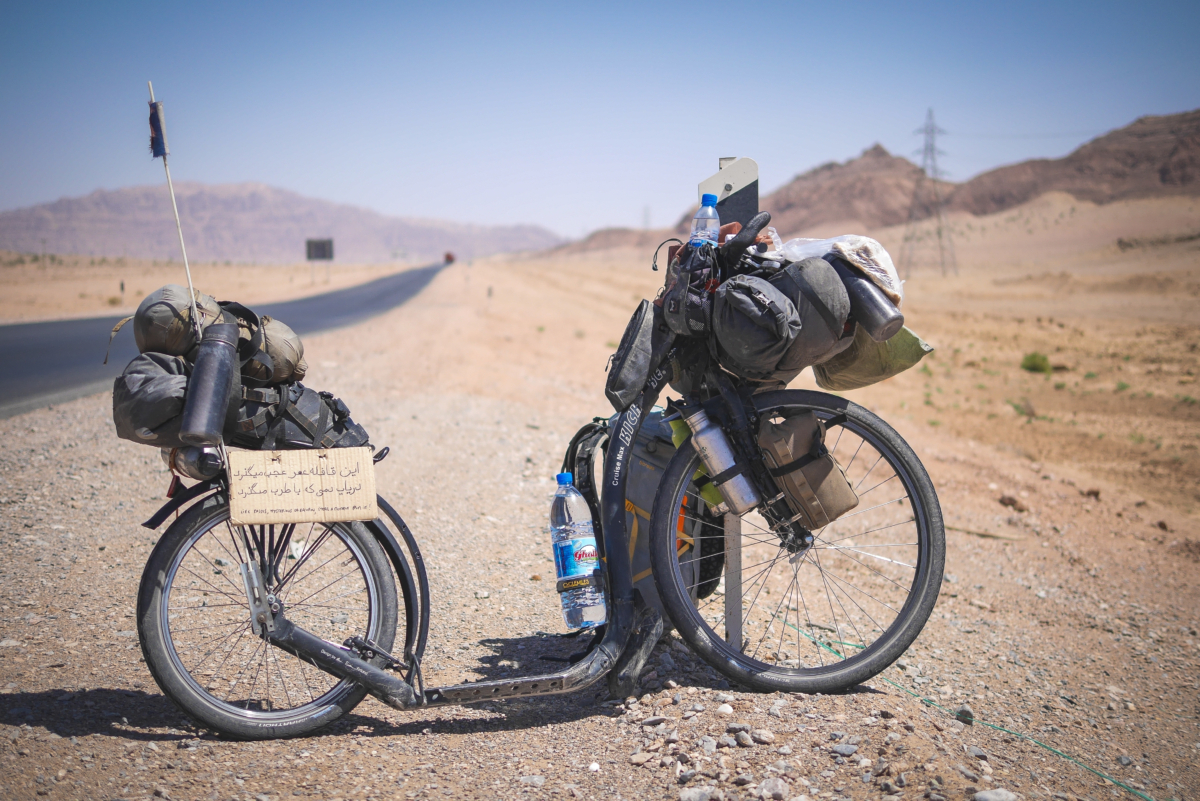
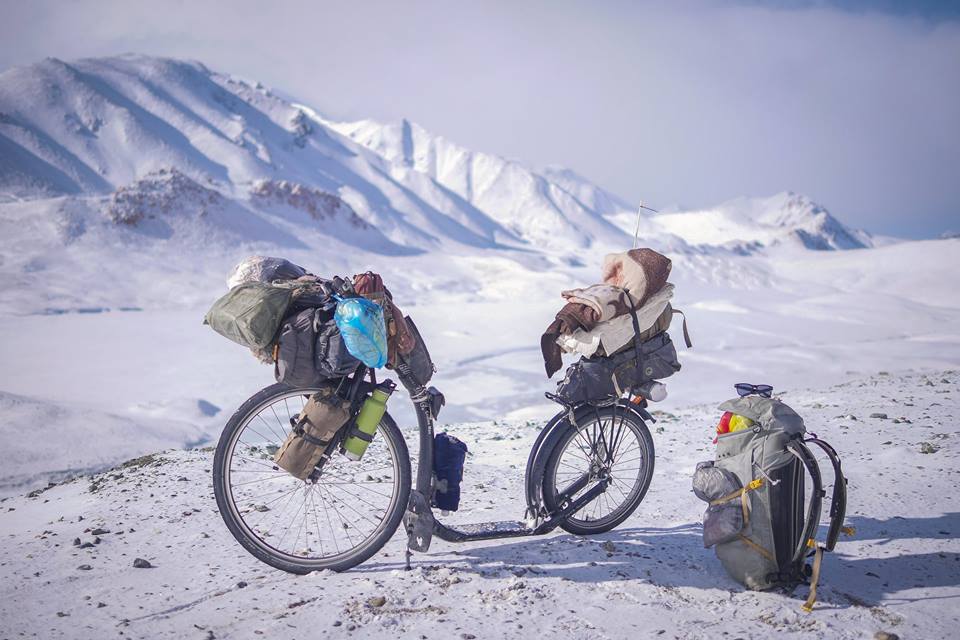
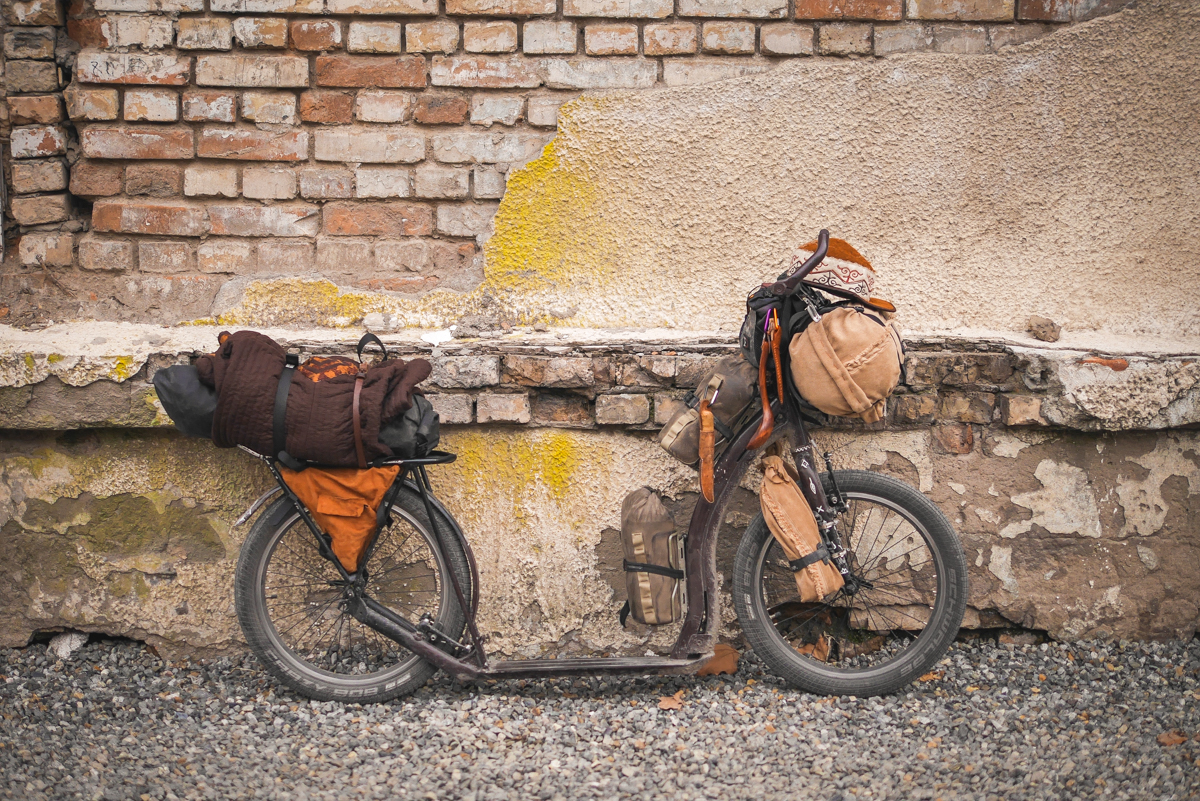
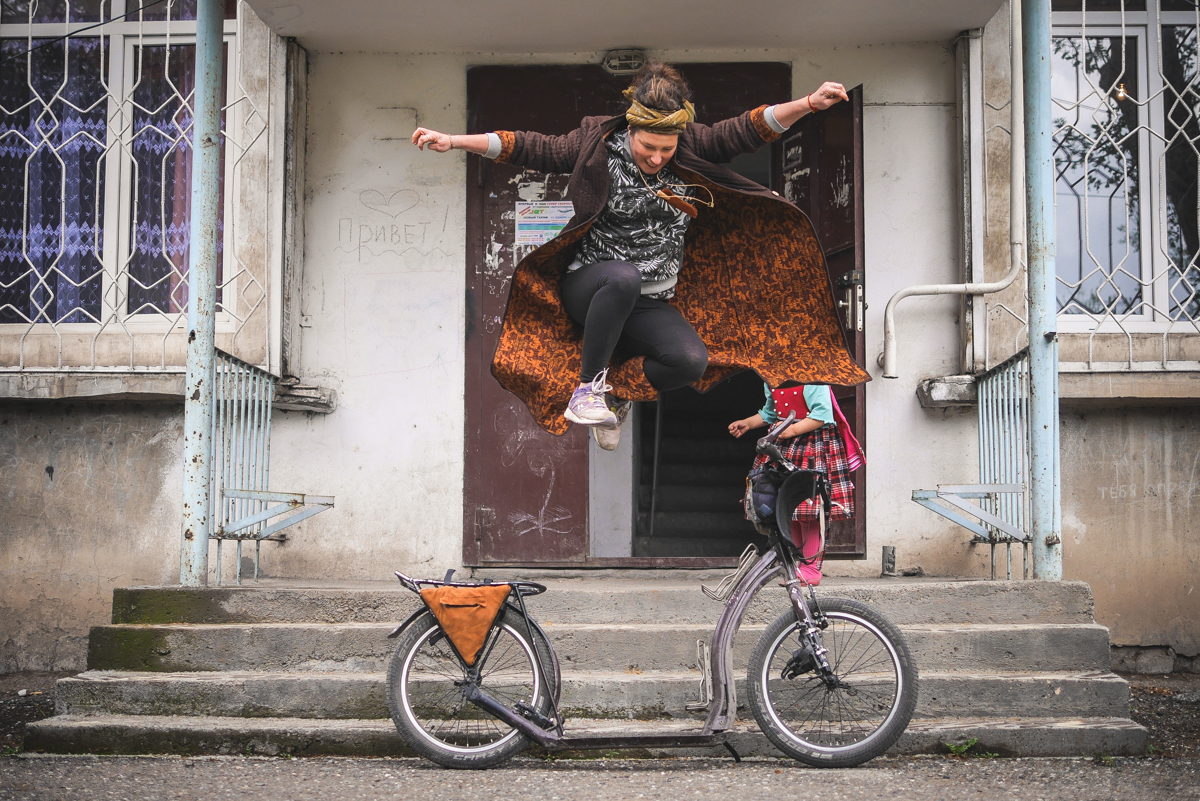
“That’s all, folks” 🙂
